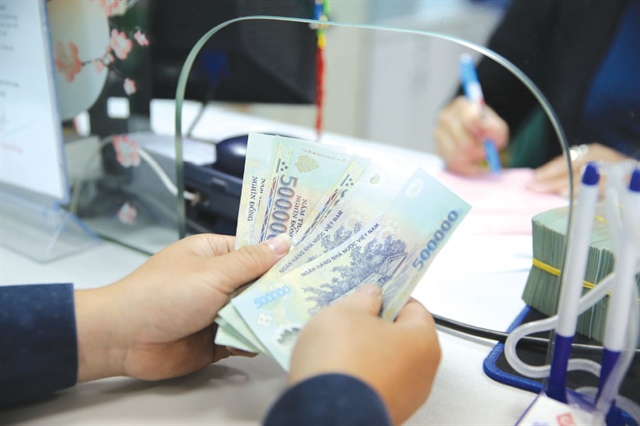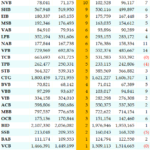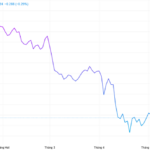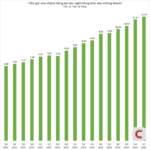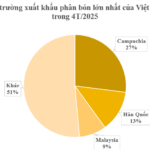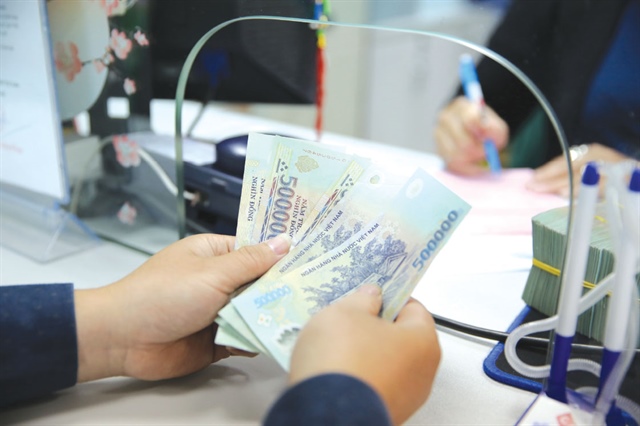
Anticipating potential risks when engaging with P2P lending platforms is essential. Illustration: T.L |
Risks of P2P Lending
At its core, P2P Lending (Peer-to-Peer Lending) is a form of online lending that bypasses traditional financial intermediaries such as banks. Borrowers and lenders are directly connected through a technology platform provided by a third party. There are currently two prevalent models: the pure lending marketplace model, where lenders decide to fund specific profiles on the app, and the pooling model, where investors contribute to a common fund and the platform automatically distributes the loans.
With a significant proportion of the population lacking access to bank credit, coupled with a substantial demand for consumer and microloans among individuals and small businesses, Vietnam presents a fertile ground for the growth of P2P lending. The advancement of financial technology (FinTech), electronic identity verification (eKYC), big data analytics, and artificial intelligence have expanded the scope of credit assessment and risk management in the country.
Approximately 100 companies in Vietnam operate in the P2P lending sector, many of which have foreign investment and follow the first model. However, due to a lack of clear legal frameworks, several issues and limitations have surfaced over time. Some P2P lending platforms have engaged in shadow lending activities, employing violent debt collection practices, defaming borrowers, and encountering moral hazards from both borrowers and platform providers.
|
Borrowers should be cautious about the actual interest rates charged by these platforms, as the advertised rates may be low, but various hidden service fees and late payment penalties can significantly increase the overall cost. |
In the past, due to a lack of regulations regarding licensing, minimum capital requirements, interest rate caps, and transparency obligations, many P2P lending platforms operated in a legal gray area, despite not being affiliated with banks or financial companies. Some platforms collected funds but failed to disburse loans as promised or misused the funds. The industry also lacks standardized credit rating systems, assessment methods, and mechanisms to protect users.
When risks materialize, resolving disputes between lenders, borrowers, and the platform can be challenging due to the absence of specific laws. Moreover, the sector faces high non-performing loan rates, and credit risks are not adequately managed. There have been instances of borrowers deliberately exploiting the simple and unsecured nature of these loans for fraudulent purposes. However, without a robust CIC (credit information center) comparable to that of banks, platforms may struggle to accurately assess borrowers’ repayment capabilities, and the lack of loan insurance further exposes investors to direct risk.
Additionally, there are technological and security risks. A platform breach could result in the exposure of personal information and transaction histories. Such incidents can erode investor confidence, hindering the market’s sustainable development. If investors withdraw their capital en masse, it could trigger a domino effect, leading to widespread defaults and the rapid collapse of platforms.
Therefore, the recent enactment of Decree 94/2025/ND-CP, which provides a legal framework for P2P lending, is a much-needed development.
Precautions
Even with Decree 94 in place, it remains crucial to anticipate potential risks when engaging with P2P lending platforms. Borrowers should be cautious about the actual interest rates charged by these platforms, as the advertised rates may be low, but various hidden service fees and late payment penalties can significantly increase the overall cost. Some platforms offer convenient procedures and quick disbursements, but they may impose hefty penalties for even minor delays. Various other fees, such as application, processing, and disbursement fees, are often not clearly disclosed during the registration process, so borrowers must carefully read the contract’s terms and conditions.
|
Investors should approach P2P lending with the understanding that it is not a bank savings product with insurance. There is a higher likelihood of default if the platform is weak or the borrower is dishonest. Therefore, investors should consider not only the nominal interest rate but also the default rate, recovery time, and handling costs. It is crucial to actively monitor the portfolio, keep track of investments, and be prepared to act when signs of distress emerge. |
Additionally, borrowers should verify the platform’s legitimacy by checking for a clear business registration, physical address, and customer support hotline. It is advisable to avoid unfamiliar applications and protect personal information. Never provide your identification documents, phone contacts, or bank account details to suspicious apps. Under no circumstances should one agree to borrow on behalf of friends or acquaintances through a P2P lending platform, as the signatory of the loan contract bears the ultimate legal responsibility.
Investors should approach P2P lending with the understanding that it is not a bank savings product with insurance. There is a higher likelihood of default if the platform is weak or the borrower is dishonest. Therefore, investors should consider not only the nominal interest rate but also the default rate, recovery time, and handling costs. It is crucial to actively monitor the portfolio, diversifying investments by allocating smaller amounts to multiple borrowers (ideally not exceeding 5-10% of the portfolio to a single borrower) to mitigate the impact of potential defaults. Look for platforms that offer collateral or capital protection funds, and carefully examine the effectiveness of their insurance or risk reserve mechanisms. Refrain from borrowing money to invest in P2P lending, as it could lead to a double-interest trap if repayments are not made on time.
Lastly, P2P lending service providers must disclose their business models and actively participate in the State Bank’s regulatory sandbox. They should be transparent about interest rates, fees, and penalty conditions, avoiding deceptive or misleading terms. Developing a risk warning system for investors, providing clear credit ratings, default predictions, and stress test models will empower investors to make informed decisions. Platforms should also avoid conflating their role as intermediaries with direct lending, as excessive profits from borrowers may lead to accusations of shadow lending. Refrain from aggressive debt collection practices, such as incessant phone calls or threats, and do not collaborate with unlicensed third parties for debt recovery. Strengthen credit evaluation systems by leveraging AI and big data analytics, and establish robust links with CICs to minimize reckless lending practices that could result in significant investor losses. Data privacy protection must be a key priority.
Triệu Minh
– 16:00 19/05/2025
The Weakening Dollar: Why Are Exchange Rates Still Rising?
Despite a slight dip in the USD-Index since the beginning of the year due to expectations of a Federal Reserve rate cut in 2025, the USD/VND exchange rate has paradoxically risen. This intricate paradox reflects the multifaceted and complex nature of Vietnam’s current foreign exchange market.
The New Deposit Dash: VPBank, SHB, and HDBank Surge Ahead as Vietcombank, TPBank, and SeABank Stumble With Negative Growth
“Customer deposits at Vietcombank dipped by over VND 5.5 trillion in the first quarter of the year, following two consecutive booming quarters in 2024. TPBank and SeABank also went against the grain, witnessing decreases of nearly VND 9.7 trillion and VND 8.3 trillion, respectively. Conversely, VPBank experienced its strongest quarter ever in terms of attracting deposits.”
Why is the 120,000 billion VND low-interest loan package for social housing a miss?
Despite offering interest rates 1.5-2% lower than the market average, the social housing credit package of 120,000 billion VND has seen a sluggish disbursement rate.


























